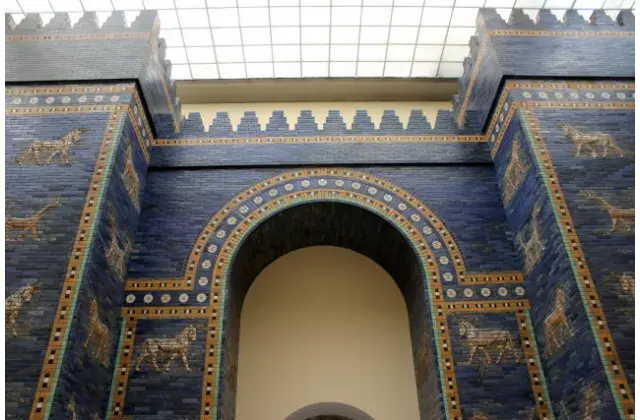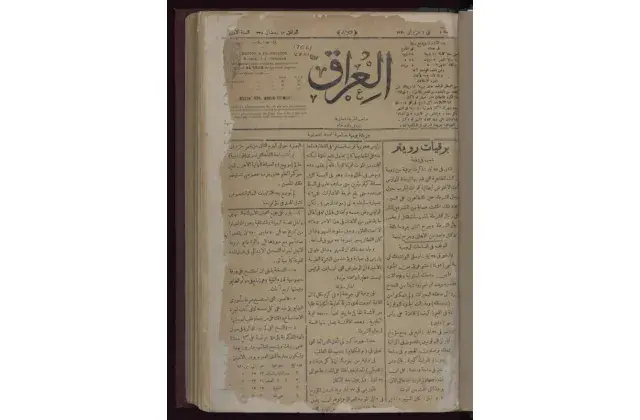The Ottoman Rule in Iraq (1500-1920)

At the beginning of the 1500s Iraq fell to the two Muslim rival powers: the Shi’ite Safavid empire and the Sunni Ottoman Empire, each aspiring for domination. Iraq was one of the battlegrounds where these two powers clashed in the 1514 Battle of Chaldiran, resulting in the victory of the Ottoman Turks over the Safavids. Iraq was no longer the centre of empires, but incorporated into the vast Ottoman Empire and remained under the Ottoman rule until the fall of the empire at the end of World War I in 1918.
When the Ottomans conquered Iraq, they established the provinces of Baghdad, Basra, and Mosul as administrative centres. The inhabitants of these three provinces exhibited a diverse range of social and communal structures. In the north and north-eastern parts of Mosul and Baghdad, dynasties and tribal affiliations shaped the lives of the people; the Kurdish sheikhs of the Sufi orders had had major roles in shaping these identities. Additionally, notable in those areas were the Yazidis, Assyrian Christians, and the Shi’a Kurds and Turkmen. In the Arab-speaking Sunni part of Mosul and Baghdad as well the Shi’as in the south too, strong tribal and local affiliations influenced people’s lives, determined by economic and military capacities. These social and communal structures led to the rise of a number of local and small principals who inhabited complex and dynamic power relations among themselves and with the Ottoman Empire. The Ottoman sultanate aimed to establish direct governance over the region by deploying Ottoman administrators. Simultaneously, they worked on fostering relationships with local leaders, particularly those from tribal groups, to secure their allegiance to the sultan. The Arab and Kurdish tribes remained challenging for the Ottomans to manage, leading them to depend on the sheikhs to enforce their policies, primarily in tax collection. Simultaneously, the sheikhs depended on the Ottomans to maintain their own authority.
In the early 1800s, the allegiance among the various communities in Iraq with the Ottoman rule began to deteriorate, prompting the Ottomans to introduce reforms aimed at the notion of modernisation and restoring centralised authority within the Ottoman Empire. Hence, a transformation from traditional Islamic framework to a more European form of governance. This transformed power relations that were previously regulated through traditional forms such as, tax farming and rules of sheikhs and princes, which were replaced with administrative councils and municipalities. This period began with Hatt-i Sherif of Gulhane in 1839 until 1876 when a constitution was decreed. The reforms were understood by the local Ottoman elites as adopting western political modernity within the empire’s institutions, particularly within its administrative apparatus. Administrative reform followed, starting with the abolishment of the traditional land-tenure system. The reforms introduced various measures and laws, including equality between communities, the establishment of elected administrative councils, citizenship regulations, and judicial reorganization. The adoption of the reform was driven by pressures from Europe's expanding capitalism and the need for reforms to compete and establish new markets. It was also a response to tensions among Ottoman ethnicities and growing national identities. Different stakeholders perceived the reforms differently: for European powers, it facilitated commerce and protected foreign communities, while for Ottoman elites, it aimed to prevent foreign intervention through representation and citizenship rights. Ottoman communities viewed the reforms as a move towards equality, non-Turkish ethnicities saw them as a chance for participation.
Ottoman governors were sent from Istanbul; with the arrival of Medhat Pasha as the governor of Baghdad in 1869, a number of reforms were implemented. The Vilayet Law of 1864 as one of the main reforms was implemented to reorganise the provinces. According to the law, clear geographic boundaries were set out between the provinces and a new centralised administration structure was established for Baghdad, Basra, and Mosul Vilayet. This step was to consolidate power and control over the emerging and established local ruling families within the diverse Iraqi society.
The achievements of the Ottoman reforms in the 19th century, including the enactment of constitutions in 1876 and 1908, were pivotal for the people of the empire, laying the foundation for modern constitutional thought. Despite challenges faced during these reforms, they represented a sophisticated expression of reformation, attempting to modernize society by introducing new concepts like the nation-state, citizenship, representation, voting, civic freedoms, separation of powers, and accountability.
Following World War I and the Ottoman Empire's defeat, the League of Nations granted Britain a mandate to govern Iraq in 1920. This marked the end of Ottoman rule in Iraq and the beginning of British administration, eventually leading to the establishment of an independent Iraqi state in 1932.
This article was written by Renas Babakir and is licensed under CC BY-NC 4.0.






